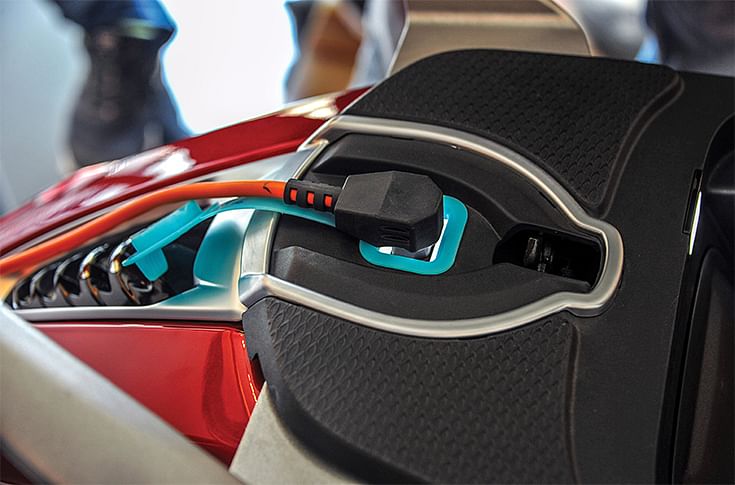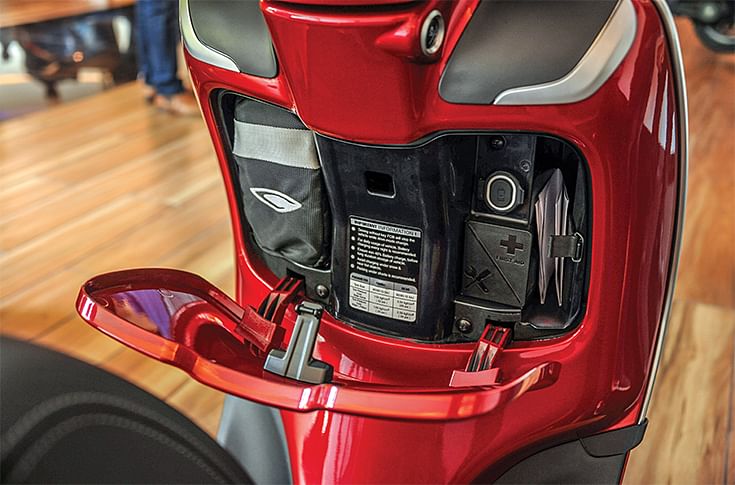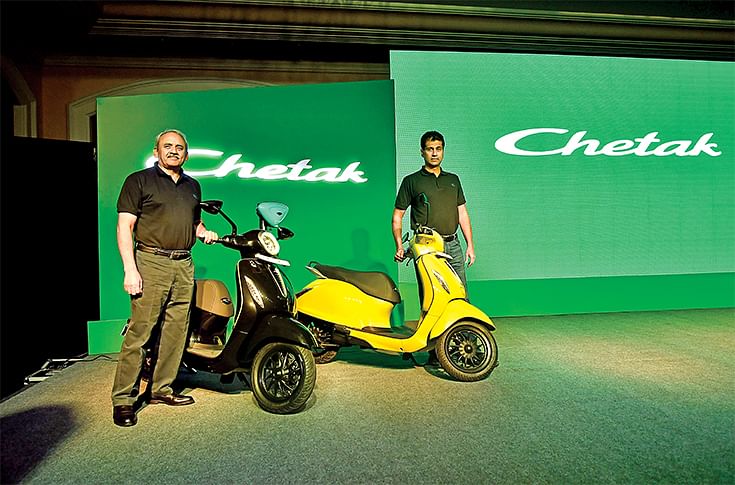Bajaj Auto to address EV user range anxiety with home charging infra
Following a company survey that revealed that consumer anxiety related to charging could decide the success or failure of its electric Chetak scooter, the company reaches out to consumers.
Apprehension about travel range is one of the biggest reasons why Indian customers are not emptying their wallets on electric vehicles (EVs). Now Pune-headquartered Bajaj Auto, which recently launched its maiden electric two-wheeler, the Chetak scooter, hopes to reduce the range anxiety issue among its customers with its convenient charging infrastructure option.
Bajaj Auto is offering assistance to set up in-home charging stations for Chetak customers. At 95 kilometres per charge, the Chetak already has a longer riding range than some of its electric scooter rivals.

The two-wheeler major’s strategy is backed by reports from intensive surveys across the country trying to understand consumer behaviour before commencing Chetak production. The survey findings revealed that more than anything else, it is the anxiousness related to charging that may decide the success or failure of its electric two-wheeler project. A study by the government-backed Bureau of Energy Efficiency seconds Bajaj Auto’s survey findings, concluding that though EVs and the supporting eco-system would continue to evolve in India, home charging is more likely to develop as the primary option and may even go on to command nearly 70 percent of the charging pie by the end of this decade.
According to Rakesh Sharma, executive director at Bajaj Auto, the company is doing its bit to expand the fledgling EV charging infrastructure in the country. “We said, let us take a step forward. Hopefully, the government and (housing) societies can exert some kind of pressure,” said Sharma.
Sharma explains that his team’s current task is to minutely observe how the launches in Bangalore and Pune pan out before plugging into other cities. The reason for not launching the Chetak in major metro cities such as Mumbai and Delhi is that most people live in apartments, which brings a lot of challenges. Therefore, any wrong move may end up hurting the EV segment as well as the Bajaj Auto brand. “Because we are not so sure, we want to see how Bangalore (and Pune) responds and then be able to see this apartment complex (challenges) as we don't want to give it a bad name,” added Sharma, emphasising that if the charging eco-system does not develop, then the company may rather choose to go to a city like Indore rather than launch it in Mumbai because the apartment living is not so prominent there.
Challenges of home charging
Some major challenges revealed in the survey is the lack of dedicated parking space in housing societies for two-wheelers, albeit it is also the same for four-wheelers in most parts of urban India. Also, if there are about 100-odd EVs, then setting up of as many personal charging points is likely to be an uphill task with separate charge meters. Further, setting up common/shared charging points may also bring along its own issues like conflict among flat owners as to who charges his/her EV first and other similar issues. Further, getting all the permissions for laying of charging point remains the responsibility of the customer and with infighting and litigation common in most large housing societies, obtaining permission from the authorities may prove challenging.
Because Bajaj Auto sells its products in 70 countries, the company is Union Budget-agnostic, says Rajiv Bajaj (right).
However, there is a silver lining. The company claims some housing societies are forthcoming in deployment of charging points in their premises. “We have also seen that in some societies, the residents are saying that their society should be progressive and are having meetings,” continued Sharma. “We are hoping that this kind of movement builds up,” he added on an optimistic note.
Retail experience
With the strategy to brand Chetak as a premium product, Bajaj Auto will be selling it through the chain of KTM-Husqvarna retail outlets. It is planning a portfolio of products for Chetak, with two variants already available. According to Sharma, it is high time the auto industry, especially two-wheeler OEMs, really up the ante in terms of retail experience for the customer, which is abysmally low at present. All the industry players are managing to get away despite underserving the customers. “I must confess that we are underserving the customer and it has to change. It has to improve, otherwise we will get punished,” adds Sharma.

The Bajaj Auto top executive attributes some of this due to a cultural factor that needs to change. The company claims to have built up full digital sale within its retail stores. A potential customer can point an iPad at a specific vehicle area to receive the product explanation. Also, Bajaj is toying with the idea of selling Chetak through online aggregators such as Amazon and Flipkart.
Investment plan
According to Sharma, the company has not invested heavily in the EV project, as it has used most of the already available in-house resources. “So, there is a lot of ‘stuff’ which is going to travel across the ICE and EV,” points out Sharma, emphasising that there is not much of capital expenditure in setting up the operations except for the assembly line which he termed it as ‘peanuts’. “It is so small that it really doesn't get into our management discussion.”
According to Bajaj Auto management, the demand for two-wheelers is likely to remain subdued during the first half of the fiscal year as consumers adjust to the increased prices due to the BS VI emission norms upgrade and get used to the ‘new normal’.
(This article was first featured in the February 1, 2020 issue of Autocar Professional)
RELATED ARTICLES
From Rs 431 Crore Loss to Recovery: Inside TIL’s Comeback
New ownership charts ambitious turnaround for TIL, India's oldest crane manufacturer.
Why Toyota Is Building Its Carbon-Neutral Future Around India
A look inside the engineering logic driving the world’s largest carmaker as it pursues multiple routes to decarbonisatio...
ZF’s Construction Equipment Strategy Reveals How India Has Moved Beyond the Auto Market
ZF's leadership sees the construction equipment sector as an anomaly, a segment that, despite its current sluggishness, ...






 29 Feb 2020
29 Feb 2020
 19660 Views
19660 Views






 Shahkar Abidi
Shahkar Abidi


 Ketan Thakkar
Ketan Thakkar


